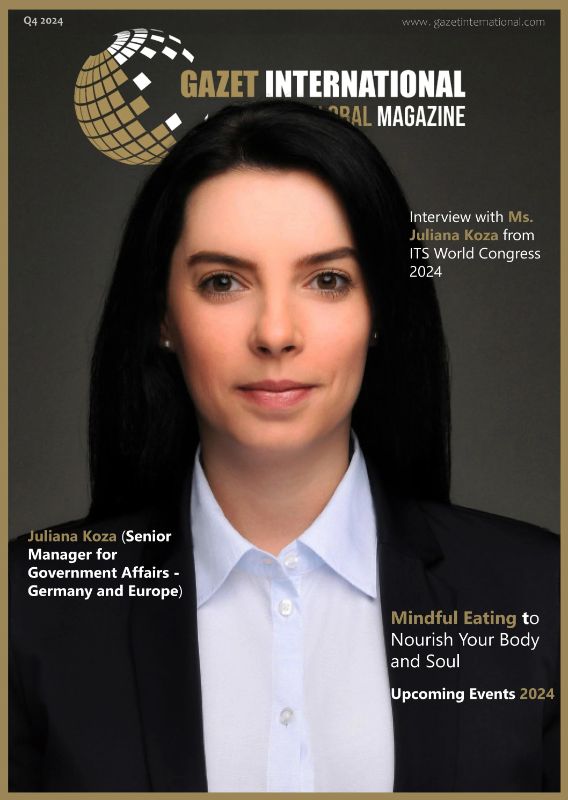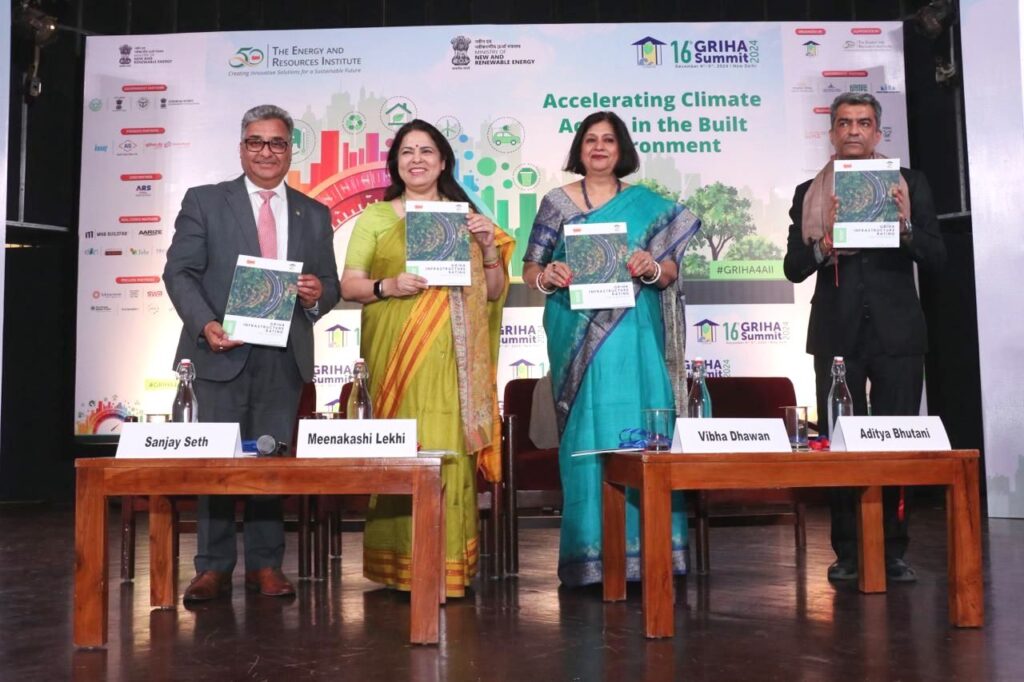The 16th GRIHA Summit, organized by the GRIHA Council, concluded with a strong emphasis on ‘Accelerating climate action and fostering resilience in the built environment’. Over two days, the Summit brought together policymakers, industry leaders, and community representatives to explore strategies for sustainable infrastructure development.
Launch of GRIHA Infrastructure Rating for Highways at the 16th GRIHA Summit
Dr Vibha Dhawan, President of the GRIHA Council and Director General of TERI, highlighted the event’s overarching vision in her address. “Challenges will always arise, but what truly matters is how we face them and create a lasting change. Perfection may never be reached, but the chance to go green is here, and it’s up to us to seize it,” she said.
Delivering the valedictory address, Smt Meenakashi Lekhi, Former Minister of State for External Affairs and Culture, and Member of Parliament, called for unified efforts to achieve climate resilience. “Let’s not let others dictate our agenda. It’s time to run our own green agenda, rooted in our heritage and guided by GRIHA standards. GRIHA symbolizes India’s commitment to sustainability and green living. With the concepts of reusing and recycling, we have to get our existing buildings compatible with the standards provided by GRIHA,” she said.
The valedictory session opened with remarks by Mr. Sanjay Seth, Vice President and CEO, GRIHA Council, who underscored the critical need for innovation and collaboration. “The conversations we’ve had, the ideas we’ve shared, and the solutions we’ve proposed over these past two days will play a crucial role in transforming our built environment. It is our collective responsibility to leverage our expertise and passion to drive positive change. As we reflect on our journey, we also celebrate the exceptional achievements that are setting new standards for sustainable excellence,” he stated.
A significant highlight of the session was the launch of two new sustainability frameworks: the GRIHA Rating for Ports and the GRIHA Infrastructure Rating for Highways, designed to promote environmentally responsible practices in these critical sectors. Both ratings aim to advance sustainability by providing standardized frameworks for assessing and enhancing infrastructure performance.
Mr. Aditya Bhutani, Director and COO of AIS GlassXperts, emphasized the role of partnerships in advancing sustainability. “Net zero isn’t just an opportunity; its the reality we must achieve. Change doesn’t require grand gestures; small acts, multiplied by millions, can transform the world,” he remarked.
During the valedictory session, GRIHA award ceremony was also held wherein the GRIHA 3-star and 2-star Rated Projects were felicitated by the eminent dignitaries. Winners of GRIHA Exemplary Awards and GRIHA Exhibition Design Competition were also awarded.
As part of the Summit, a side event titled “Scaling Up Building Integrated Photovoltaics (BIPV) Technologies in Buildings in India” was organized in collaboration with GIZ India, Ornate Solar, and The Energy and Resources Institute (TERI). The session focused on addressing critical challenges such as balancing aesthetics with efficiency, assessing the lifecycle impacts of BIPV materials, and evaluating the economic feasibility of large-scale applications.
With four plenary sessions and six thematic tracks, the Summit addressed pressing issues towards accelerating climate action at various levels including policy advocacy, united stakeholder action, energy transition and promoting smart & resilient infrastructure development. This year’s key deliberations revolved around managing urban heat, exploring biophilic designs & innovative construction materials, incentivizing for propelling a low-carbon development, the role of communities and transformation of existing infrastructure.
The event concluded with closing remarks by Ms Shabnam Bassi, Deputy CEO and Secretary, GRIHA Council, reaffirming the commitment to advancing sustainability through collaboration and innovation.
The 16th GRIHA Summit witnessed participation from government and industry leaders, policymakers, architects, urban planners, product manufacturers, researchers, financial institutes, and civil society. GRIHA Council expresses gratitude to its partners, esteemed partners, including the Ministry of New and Renewable Energy, State Governments of Uttar Pradesh, Telangana, Assam, and Rajasthan, as well as industry leaders such as Knauf, Asahi Glass, ARS Steel and Alloy International Pvt. Ltd, Union Bank of India and many more.
About GRIHA Council
GRIHA (Green Rating for Integrated Habitat Assessment) is jointly established by the Ministry of New and Renewable Energy (MNRE), Government of India and TERI in 2007. It holistically evaluates the environmental performance of buildings over its entire life cycle based on qualitative and quantitative criteria, thereby providing a definitive standard for ‘green buildings’ and habitats. GRIHA has been developed for various building typologies considering the Indian climate and construction practices. India, in its NDC document submitted at COP 21 in Paris has highlighted GRIHA as an indigenous green building rating system developed in India. GRIHA is a part of the mitigation strategy for combating climate change in India’s “Nationally Determined Contributions” submitted to UNFCCC by the Ministry of Environment, Forests & Climate Change (MOEFCC), Government of India. GRIHA has received accolades in spheres such as energy efficiency, site planning, conservation, and efficient utilization of resources.
About TERI
The Energy and Resources Institute (TERI), based in India, is an independent, multi-dimensional research organization with capabilities in policy research, technology development, and implementation. An innovator and agent of change in the energy, environment, climate change and sustainability space, TERI has pioneered conversations and action in these areas for nearly five decades. Headquartered in New Delhi, it has centers in six Indian cities and is supported by a multi-disciplinary team of scientists, sociologists, economists, engineers, administrative professional and state-of-the-art infrastructure.


